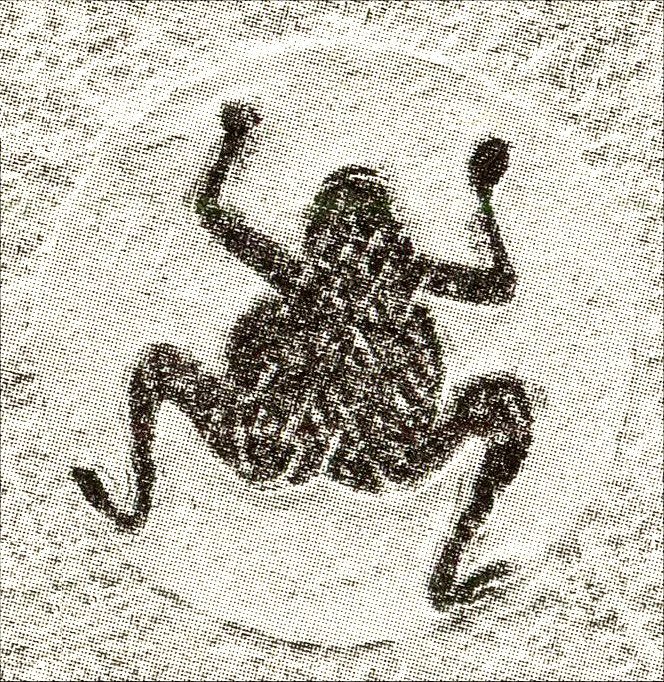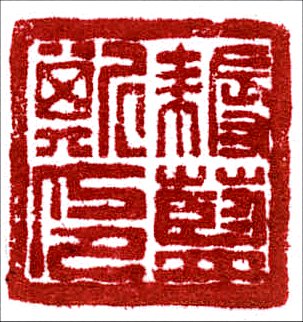
The silhouette of Lancelot Nul
The story’s longer synopsis….
As noted, Silhouette consists of eighteen letters from people who either knew Lancy well or figured into major events of his life, letters addressed to his worried mother. It interweaves these letters – six for his time at Camford University, six for Huichen and six for Townvilleton City – with two other storylines, the first being a year of Camford tutorial transcripts from the early eighties between Linden Angerbell and her tutor D.Fu, and the second being the composition of Wu Youren’s The Dao in a fly’s head, a twelfth-century cheat book intended to be smuggled into the imperial civil service examination. While both secondary storylines include their own colorful plots – ranging from observing the construction of a golem using Buddhist specs in Linden’s timeline, to evading angry Daoist priests from the imperial court in Wu Youren’s – their plots aren’t detailed here. (A longer synopsis that includes all three storylines in full detail as well as all philosophical matters explored therein is available upon request.)
I designed this website to impress (??) a potential literary agent whom I’ve directed here. If you yourself have stumbled across this site via a search, you are still more than welcome to read and (I hope) enjoy the beginning of Lancelot’s story by downloading the pdf at the bottom of this website’s homepage. Yet you might not want to read the following synopsis for the obvious reason: spoilers. With luck, I’ll find a critical-yet-kind agent who will help me share the rest of this project with you soon.
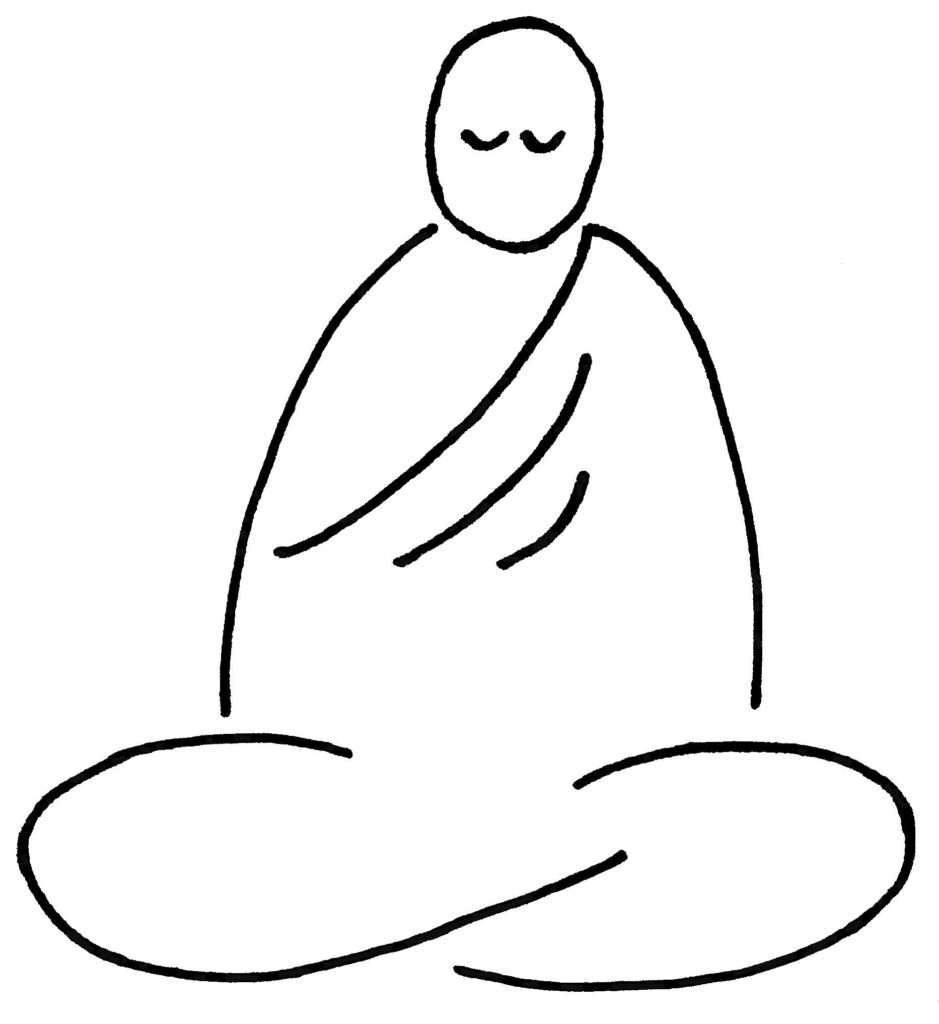
in fewer than ten strokes
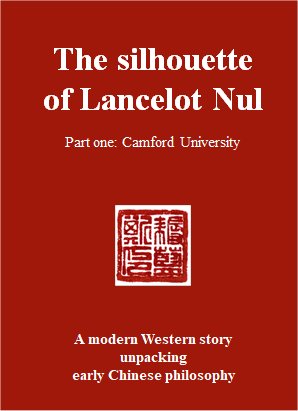
Part one: Camford University
(Fall 1998 – Summer 2004)
Lancy began as a self-confident American student who had won a major scholarship to Camford University in England. While Confucianism, Buddhism and Daoism are in dialogue throughout this project, Camford generally anchors the Confucian explorations of selfhood. Confucianism treats the self, not as the individuated essence that we assume today, but as a knot on a relationship net. I am the sum of my ties to the people around me with little or no independent essence or core – no “individual†or “me†– inside my knot. Rituals – so important in Confucianism and, as it happens, reflective of Camford’s own sense of traditionalism – make one’s surrounding network of relationships and hierarchies tangible and constant, instantiating this kind of self.
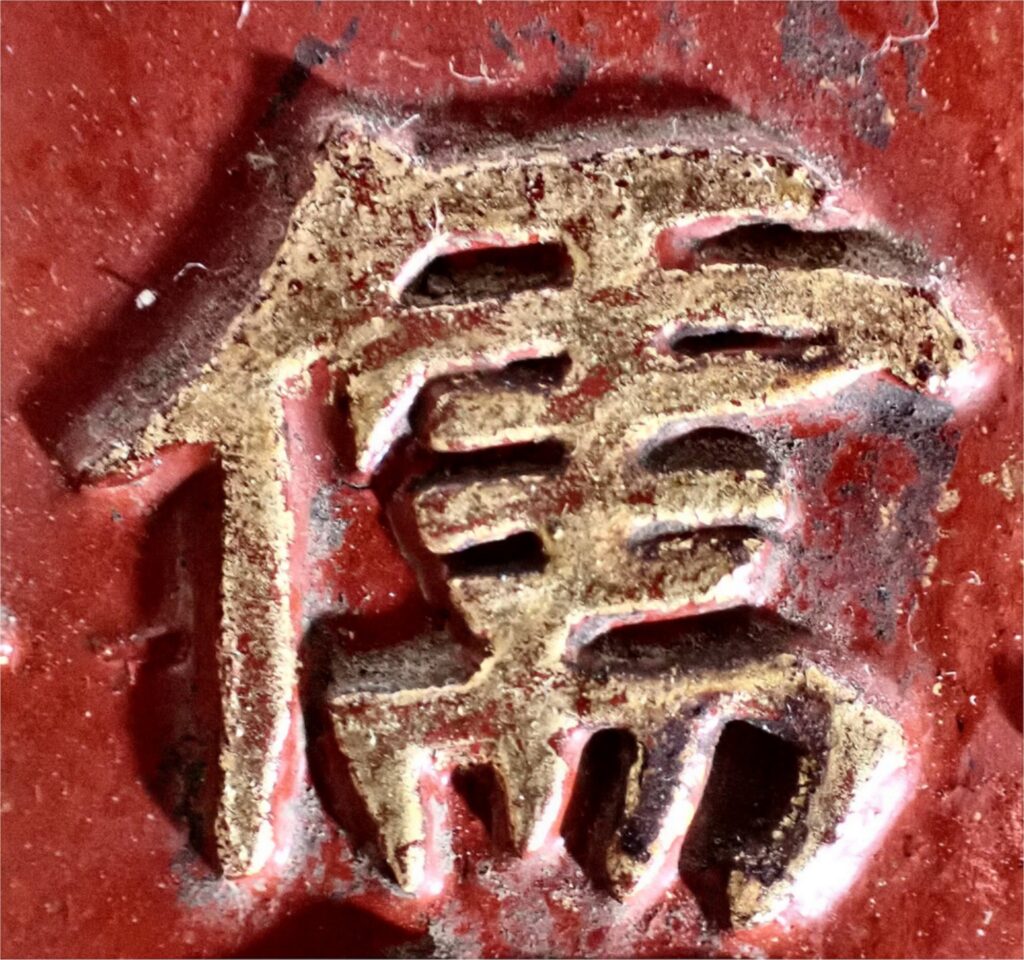
1. Keller Ward, chapel verger at St. Polycarp’s Hall, Camford University
Keller last talked to Lancy – confused, disgruntled and about to leave Camford forever – at the peculiar grave marker of Lancy’s tutor Dalton Fu, the college’s late instructor of Chinese autology. The verger in his letter flashes back to a night in “The Frog and the Well†five years earlier, remembering how the discussion of a half dozen undergrads – with Lancy on the sidelines – was interrupted by a “Bunnyvolent,†a student dressed as a giant rabbit soliciting donations in the pub. After the Bunnyvolent hopped away, they drew upon their respective disciplines to survey six historical conditions that have led to Western individualism and how “benevolence†– the self’s sympathy for the other – fared in terms of each. Yet Lancy couldn’t accept that his own individualism was merely a historical construct, caused and conditioned by earlier forces; he instead regarded selfhood as a simple matter of human nature. “I don’t get it.†Back in the cemetery, he also couldn’t decipher what D.Fu himself had intended to say via his grave marker’s peculiarities. Again, “I don’t get it.â€
- Lancelot’s story focuses on establishing the baseline of modern Western individualism and the combined forces that had created it, forces ranging from post-Reformation religions to scientific advancement, from the rise of capitalism to the growth of literacy.
- Linden’s exploration begins to investigate The Daode jing and its basic assumption that every conceptualized A cocreates its not-A. She starts with its enigmatic sentence “If the greater Dao is set aside, then there are benevolence and proper relationships.â€
- Wu Youren’s narrative, in response to Emperor Huizong’s having shifted the focus of the civil service examination from Confucianism to Daoism, prefaces his new manual by defining the Confucian watchwords of benevolence and proper relationships. He does so to contrast them with the story of Daoism that he will now unfold.
[Note how all three storylines here highlight “benevolence.†Throughout Silhouette, each chapter tackles a key theme from different angles, but this synopsis won’t dwell on each philosophical linchpin.]

2. Mamie Boonscooter, senior porter at St. Polly’s
Tracking Lancy’s first few weeks at St. Polly’s, Boonscooter was troubled by his arrogant and unquestioning embrace of individualism, recognizing it as the new norm. With the help of the Portarius Philosophicum – Camford’s subculture of pondering porters who had been studying students for a millennium – she then invented several “ancient†college rituals intended to resurrect a sense of community among these new students, rituals that only partially backfired.
- Lancelot’s story explores how rituals, language and even food were once used as tools to reduce individualism and foster community but now do the opposite.
- Linden’s exploration unpacks the spectrum of “absolute unity†versus “absolute fracturing,†starting with The Daode jing’s famous opening sentence: “As for the Dao, it’s okay to think of it as a ‘Dao,’ but that’s not the absolute Dao.â€
- Wu Youren’s narrative reveals The Daode jing’s origins in the ancestral cult, the backbone of Confucianism, in which a revered first ancestor fractures into a myriad of descendants.

3. Questa Shepworthy, Lancy’s tutorial partner
D.Fu, Lancy and Questa together witnessed the collapse of St. Polly’s bell tower even though the bell ringer inside (Keller Ward from the first letter) walked out unscathed. Relocated to Proudenshire College a week later, D.Fu had them debate selfhood and fate, after which he returned their “collections†– an exam evaluating their previous term’s progress – and Lancy, who had convinced himself he was doing exceedingly well, came to realize he was actually floundering.
- Lancelot’s story asks whether we are each absolutely patterned (Mohism), a uniquely circumstanced self aspiring to a pattern (Confucianism) or a uniquely circumstanced self sans any access to a pattern (Daoism).
- Linden’s exploration unpacks the Confucian idea of a resonance among things as opposed to one thing causally affecting another.
- Wu Youren’s narrative presents several lengthy poems from Confucians and Daoists a thousand years earlier about how the primal Dao devolved into our fractured reality.

4. Willard Shrumly, student and friend
Lancy’s best friend at Camford, J.Artus, was being expelled for failing in academics and succeeding in pranks, the latter including the entrapment of Bunnyvolents and ransoming them for beer. The university set a special last-chance examination for J.Artus, and while his friends (including Lancy and J.Artus’s girlfriend Willie) helped him prep for it in “The Frog†with a makeshift game show about selfhood in developmental psychology, he miserably failed when he discovered the silent exam invigilators were dressed up as rabbits beneath their traditional academicals. The letter ends at Tawny Meadow amidst Greek-style “funerary games†– epitomizing Western “self versus other†in competition – games played on his behalf between Bishop’s (J.Artus’s own college) and their chief rival, St. Apocrypha’s.
- Lancelot’s story explores numerous Western theories about how selfhood evolves in competition with otherhood, a mutual crystallization particularly manifested in games.
- In contrast, Linden’s exploration dives into the Confucian conception of games in which the self noncompetitively reaffirmed its ties with the other, for example in traditional archery.
- Wu Youren’s narrative follows how the pattern-aligned self in Confucianism in turn aligned its family, village, state and world. Daoism, which denied access to that pattern (if it exists at all), explicitly refuted this sequence, the self only to be compared with that self.

5. Rosalinda Zhou, former lecturer at Camford University
Helping Lancy in his last year before the final public examination, Zhou realized there was an entrenched Other-Lancy inside Lancy’s head who was always judging him, distracting him, causing him to flounder and then further judging his subsequent failure. She thought judgy Camford magnified Other-Lancy and so advised him to leave Camford for China upon graduation if he really wanted to learn Chinese. But now that he knew about this Other-Lancy, Lancy instead believed he could control this interloper by becoming a good Confucian aligned in mind and body. Among all the students who sat finals in their formal black academicals, Lancy’s the one who proudly wore improvised “Confucian†robes cut from a yellow dressing gown.
- Lancelot’s story tackles “reflexive thinking,†namely how we habituate a second passive self that steps back to watch and judge the original active self.
- Linden’s exploration presents the Confucian ideal of fighting habituation with habituation, of defeating our false assumptions and bad habits that keep us from aligning with the pattern by ritualizing proper behavior and memorizing classical texts that reveal the pattern.
- Wu Youren’s narrative surveys the famous Confucian debate on whether we are born selfless (and usually habituated to selfishness) or born selfish (and ideally habituated to selflessness).

6. Dalton Fu, late don of St. Polycarp’s Hall at Camford University
D.Fu’s family, friends and students (including Lancy) gathered for the prescribed ritual to mark the first anniversary of D.Fu’s death; they all arranged themselves before the tablet bearing his name at his household altar. This chapter records the brief remembrances of a dozen people – actually eight people, two other ancestral spirits (D.Fu’s father and William Wordsworth), one cat and a very bitter Other-Lancy – who focused their respective thoughts on D.Fu. His existence ritually rewoven by the network of those who had known him, D.Fu here reacts to each farewell before his own self unravels upon their departure.
- Lancelot’s story unpacks the mechanics of how the dead self literally survives in the networked memories of their survivors.
- Linden’s exploration compares the Western conception of a self’s lifeline – an arc that ends in a moment of transformation to elsewhere – with the traditional Chinese lifeline – an ever-rising line that continues to rise after death.
- Wu Youren’s narrative focuses on the ruler’s self and how it relates to others, particularly to his subjects. Should Emperor Huizong show partiality to no one (Mohism), to those proximate to him (Confucianism) or to himself alone (Daoism)?
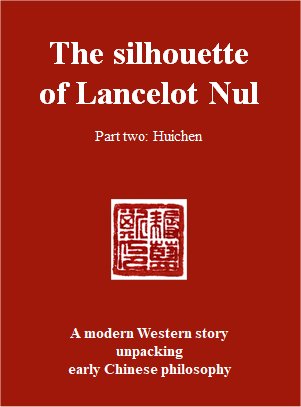
Part two: Huichen
(Fall 2004 – Summer 2007)
After nearly failing his finals, an ashamed Lancy took Zhou’s advice and moved to China. Not knowing Taiwan well, he chose Huichen in particular because she’d said that one of D.Fu’s former students, Linden Angerbell, had moved there twenty years earlier. As it happens, Linden had translated but never published The Dao in a fly’s head, a medieval text he now wanted to read, but before he could find her, he needed to find a job. In Silhouette, Huichen becomes the backdrop for discussions about Chinese Buddhist selfhood, particularly for how the self is a false perception of the habituated mind. If the Confucian self is a knot, the Buddhist self is a thought.
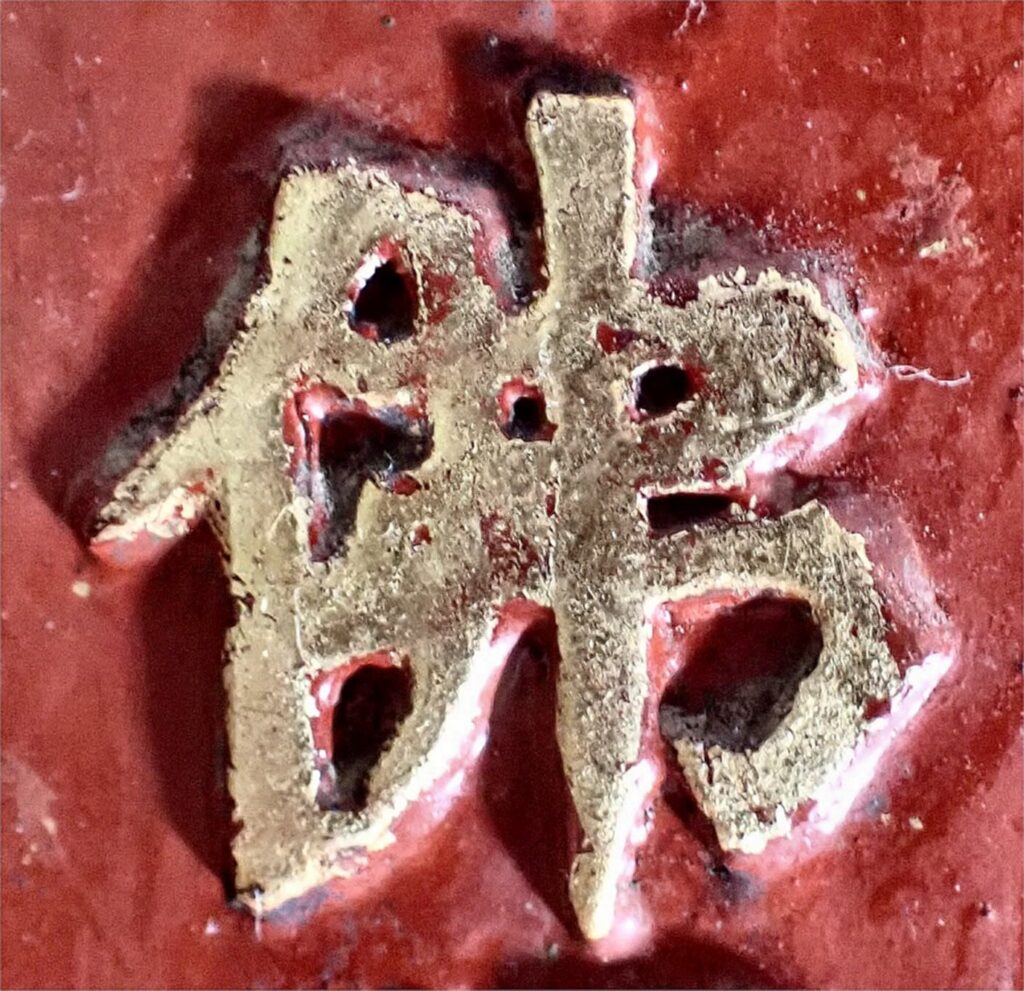
7. Ru Pusa, director of Huichen’s “Woo! Whoa! 無我 No-self Agency, Ltd.â€
Lancy first applied to be a translator at the No-self Agency associated with the city’s Jifu Temple or “Temple for Recording Merit.†This agency helped people literally calculate their merits as they endeavored to secure a human rebirth, but unbeknownst to their clientele, it secretly occasioned their merit gains by providing them with situations to behave morally. Ru Pusa describes how Lancy (et al) toured her agency and was tested in classical Chinese, but he failed. On top of that, he accidentally set fire to the temple. By way of restitution, he joined her translation team but only worked for merit, not money.
- Lancelot’s story begins with the suffering self: We are discontent because, after we desire things and then become attached to them, we feel loss when those attachments inevitably break due to universal impermanence affecting both self and the thing desired.
- Linden’s exploration traces how the question of impermanence in early Indian Buddhism evolved into a question of how the individual mind misconstrues reality in medieval Chinese Buddhism.
- Wu Youren’s narrative compares and contrasts the Daoist Dao with Buddhist ŚūnyatÄ (i.e., an “emptiness†of independence in space and of permanence in time).

8. Dawn Redd, former friend and teaching colleague
A Buddhist seeker disgruntled with the modern world, Dawn began teaching “English as a foreign language†with Lancy at the same cram school named “Its English time!†[sic], and she tried to take Lancy under her wing by helping him unpack his Buddhist spiritual self. She even introduced him to silent meditation, having him join her group that for an hour stared at an enigmatic riddle she herself had composed. He Caomi, secretary at the cram school who also attended this meditation, was extremely confused by Dawn’s “buffet Buddhism†where people helped themselves to only the Buddhist ideas they wanted. Lancy’s teaching career ended during a miserable school trip to the zoo. In traditional Chinese Buddhism, bad people are reborn as animals, and this zoo had a kiosk at its entrance selling demon masks and plastic pitchforks so the children could pretend they were giving the animals their just punishments. In the crowded parking lot at closing time, Lancy helped the coach driver back up the school coach, directing it into and over the kiosk.
- Lancelot’s story elucidates how, both in Daoism and in Western theory, the self is often considered the product of its surrounding spatial and temporal circumstances, but in Buddhism, circumstances are a product of that self, both in literati Buddhism (the habituated mind unconsciously dictates what it sees) and in laity Buddhism (the self in this lifetime dictates its circumstances in the next).
- Linden’s exploration details the four faces of the self in Buddhism: the experience (i.e., a change of state that draws attention to itself); the experiencer (i.e., reflexive thinking such as conceiving a seer of seeing or a feeler of a feeling); the experiencer relative to other experiencers in space; and the experiencer relative to its past and future experiences in time (both within this lifetime and across lifetimes).
- Wu Youren’s narrative explains how ŚūnyatÄ forces us to conceive each thing as shot through-and-through by its not-that-thing. Light is only understood by proportionate darkness within it; conventional reality by ultimate reality; self by not-self (i.e., by that self’s circumstances). Similar to Daoism in which A cocreates its not-A next to it, ŚūnyatÄ perfectly fuses A with its not-A in the same place and time.

9. He Ma, employer
He Caomi’s father, He Tan, thought that having “a white boy†in the wailing troupe performing at his own father’s funeral would add prestige to it. Yet this letter is from He Caomi’s mother, He Ma, who utterly hated Lancy. At first, the Alice-and-Alec Wailing Troupe was delighted to include Lancy, but the He funeral was a complete disaster, Lancy accidentally destroying all the ancestral tablets and statues on the He family altar. He Tan consoled He Ma at length by assuring her that those wooden statues were just wood and never had a spiritual presence inside them, just as the body had no self or soul inside it. Regardless, He Ma began plotting revenge.
- Lancelot’s story surveys the selfless self, there being no self in any of the body’s components, in the body as a whole, in anything prior to or arising from the body, or in anything beyond the body.
- Linden’s exploration is parallel to Lancy’s as she witnesses a golem being constructed via the Buddhist understanding of the five skandhas – physical senses, initial visceral reactions, concept creation from uniting the sensory inputs, memory/habituation to identify that concept and finally the resulting consciousness. There is no self in any of those five.
- Wu Youren’s narrative expands upon the fusion of A with not-A in terms of Buddhist practice regarding statues, sutras and the bodily self.

10. Guan Biti (“Betel Bettyâ€), employer
Selling betel nuts from her sidewalk booth across from Huichen’s Wheel-turning Temple, Betel Betty met Lancy when the monks were escorting him off temple grounds. Now destitute for lack of a job, he’d been begging the monks to care for his adopted stray (i.e., Deefer Dog who hates him and his leash) out of compassion, but that wasn’t what Buddhist compassion meant. An unforeseen event then resulted in a confused Lancy momentarily inside Betty’s booth selling betel nuts in her absence, but his ineptitude became the star attraction, bringing in more money than expected. Betty capitalized on this, hiring him and eventually expanding operations. Yet Lancy only got more depressed, his faults and otherness now his chief assets. Fearing that he himself was becoming a freak show, he saw everyone else seeing him, Other-Lancy aggressively claiming more real estate in his mind.
- Lancelot’s story redefines “Buddhist compassion†as the self’s state of mind and not as practical benevolence aimed at an other. Buddhism is first and foremost about the mind perceiving the world, not about the world that we think exists beyond the mind.
- Linden’s exploration unpacks three forms of meditation, the first on the nature of self, the second on the illusion of circumstances (including the phantom nature of every “other†who populates those circumstances) and the third on fusing self and circumstance. This third is “Chan†or “Zen.â€
- Wu Youren’s narrative in turn asks (and answers), “If Buddhism focuses on awakening my mind and removing the delusions around me, then how do I regard the existence of other people around me?â€

11. Heber Ashwood, former missionary
“Discovered†at his booth selling betel nuts, Lancy then became “The Enigma†on a glitzy and manic game show called “!!!!!!†in which contestants tried to decipher his unintelligible Chinese. Now rich (but still unhappy), he made ample restitution with He Ma for destroying her statues, and yet she insisted that he still stand trial before a jury of those statues. She needed Elder Ashwood, an LDS missionary with knowledge of both Chinese and Western “personal identity†philosophies, to help her as prosecutor at this trial because her husband, He Tan (who was also versed in both), was to defend Lancy. This letter focuses on that trial after which the jury found Lancy guilty, fining him 1250 demerits, payable in hell and rebirth. He Tan consoled an increasingly despondent Lancy by gifting him a seal with his name on it.
- Lancelot’s story reviews eight arguments about the continuity of personal identity, bringing Western and Chinese sources into a dialogue.
- Linden’s exploration also tackles the temporal dimension a la Buddhism, particularly its “Theory of momentariness†that atomizes time into microscopic units, and asks how one point in time relates to the next.
- Wu Youren’s narrative investigates the paradox of how our existence in time is a pure fusion of permanence and impermanence.

12. Deefer Dog
Following Lancy’s last day in Huichen, this story begins in front of Linden Angerbell’s coffin at a Daoist nunnery. There Deefer observed his master staring at the hell scrolls flanking the coffin, particularly at Madam Meng on the last scroll distributing her tea of forgetfulness prior to her patrons’ rebirths. The nuns gave Lancy a notebook, Linden’s translation of The Dao in a fly’s head. A plane ticket in hand, he then encountered Other-Lancy (as “The Enigmaâ€) on a giant flat-screen TV in a shop window, after which he decided to visit Serpent Street where he bought a vial of something called asipayear from a crone (possibly Madam Meng?). He then unleashed Deefer.
- Lancelot’s story offers an alternative vision of reality as a world of smells, and it includes four lengthy sutra descriptions on the power of scent.
- Linden’s exploration contends that laity assumptions about existence can morph into literati ideas. For example, the basic notion of reincarnation, which predates Buddhism, may inform the Buddhist ideas of both ŚūnyatÄ as well as the mind creating its surrounding circumstances.
- Wu Youren’s narrative discusses how personal existence can be both self and other at the same time, and he explains how the Buddha regards all sentient beings “as if images in a mirror.â€
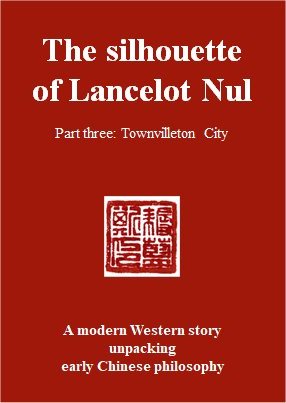
Part three: Townvilleton City
(Fall 2007 – Fall 2010)
Lancy began homeless, penniless and memoryless in Townvilleton City (TC) of the Pacific Northwest, but he still managed to scrape by. His standard of living henceforth remaining on the edge of subsistence, he eventually made a career of weeding dandelions, something he was particularly good at. In Silhouette, TC becomes the backdrop for Daoism, and it’s where Lancy finally figured out how to become happy within just his own moment and place. While the self is a knot in Confucianism and a thought in Buddhism, it’s a clot in Daoism, a momentary coming together of aggregates entirely defined by its own circumstances and not by anything beyond them.
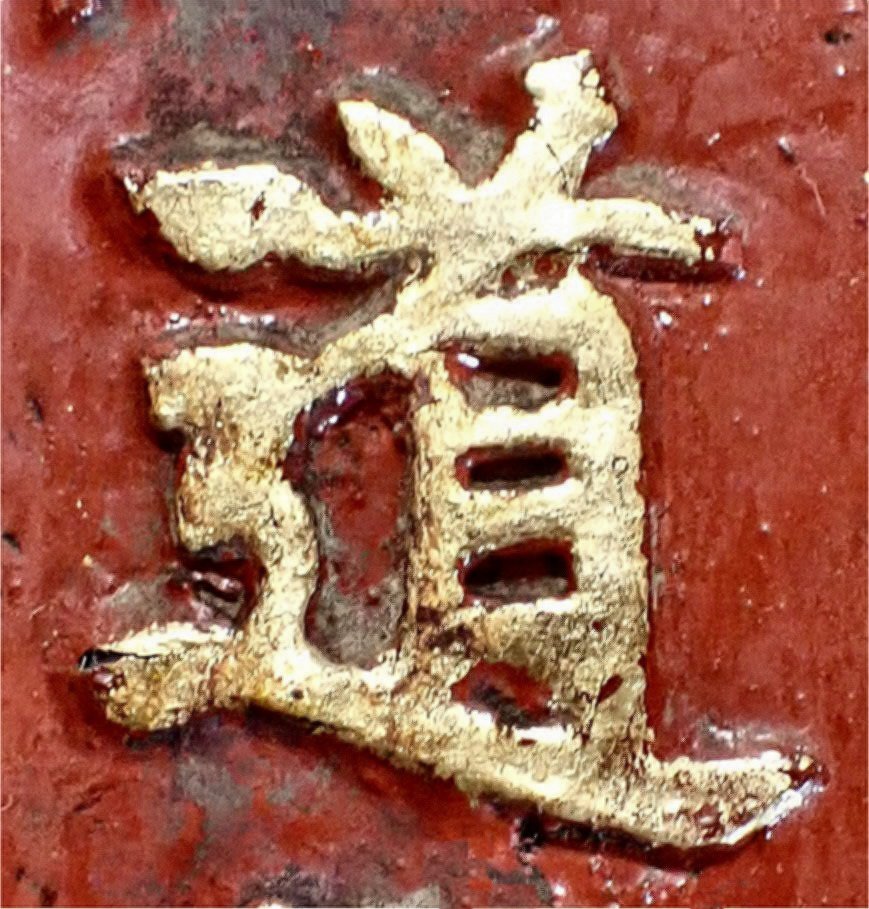
13. “Slight-Lee†Noojum, mayor of Townvilleton City
Flying from Huichen to TC because he had intended to visit his friend J.Artus, Lancy mid-flight lost his autobiographical memory of the previous decade after drinking ten drops of the asipayear. Thus a confused and penniless Lancy now found himself begging for change on a TC bridge early one morning when the passing Mayor Noojum happened to give him some coffee. Lancy thanked the mayor with a homemade coupon for “five merits,†his personal seal stamped on it. The mayor encountered him several more times over the months to come and appreciated his insights on light-handed Daoist governance. At the same time, this trafficking of merit coupons spread like wildfire among the urban homeless. The mayor wanted to help Lancy by streamlining the ad hoc process, but Lancy argued that such professionalism from the top down would kill the joy of the self’s individual encounters with just the people immediately around it. Lancy also declined the mayor’s kind offer to hire him – his mind was still too foggy – but he accepted the offer to live for free on an equipment barge on the river that needed to be occupied at night for insurance purposes.
- Lancelot’s story focuses on how a Daoist ruler “rules†but without acting upon others via rewards and punishments.
- Linden’s exploration demonstrates that, if I am a nexus of my own circumstances (as Daoists contend), I neither act upon others nor am acted upon by others outside my circumstances.
- Wu Youren’s narrative reveals Huizong’s own understanding of Daoist rule by citing the emperor’s personal commentary to The Daode jing (a relatively unknown commentary which really does exist): “The world succeeds without emperors and kings acting upon it†so that “the ten thousand entities actually form and transform themselves, developing their own knowledge and their own strength.â€

14. Bananas Foster, Lancy’s friend
A street preacher, Bananas belonged to a sect raising money for the poor by selling purgatorial inflictions – as opposed to indulgences – to punish the selfish Me-nows for having left the world in the state it’s in. She invited Lancy and two others – Magdalena and Dewey – to visit “The field of flames,†an annual two-day expo where every manner of religion in search of congregants would set up booths to out-hell one another. The whole marketplace of perdition was intense, loud and brutal. A student of religion, Dewey chastised himself for not having filmed their visit for something called a YouTube video, but as Bananas pointed out, only vendors had permission to make such recordings. To help Dewey become a vendor on the second day of the expo, Lancy resurrected the Confucian system of judgmental posthumous names in which the reputations of the dishonorable dead went to hell. So they set up their own booth on the edge of the marketplace. This letter concludes with J.Artus later reconnecting with Lancy – he saw Lancy in the video – although Lancy didn’t remember him because the memory gap from drinking asipayear was permanent.
- Lancelot’s story traces how selfhood gets magnified 1.) in religion generally, 2.) in Christianity particularly and 3.) in American Christianity especially. That magnification is contrary to philosophical Daoism that won’t admit to any judgements external to one’s own circumstances.
- Linden’s exploration concludes that, if the self in Daoism is a nexus of its own circumstances without recourse to anything beyond them, then even that idea – i.e., “the self … is a nexus of its own circumstances†– can’t be handed from D.Fu to her. (Early Daoists explicitly agree.) Hence she now began thinking about “going it alone.â€
- Wu Youren’s narrative contends that, after Buddhism arrived in China, some Daoists fused the self with its not-self – i.e., the self with that self’s circumstances. If so – and if those circumstances were patterned – then that self would seek to be patterned. Confucianism creeps back in.

15. J.Artus Fu, Lancy’s friend
A couple months later, J.Artus included Lancy in his entourage traipsing up a mountain to collect footage for “VirTrail,†a stair-climber synced with actual hiking videos, which was his and wife Willie’s latest venture. One hiker, Potty, was having a religious experience on this overnight trip, and the others discussed physical, logical and cultural reasons why mountain hikes and religious experiences often went hand-in-hand. That night, an ecstatic Potty tossed J.Artus’s expensive camera rig off the cliff because God had told him the sublime in nature wasn’t to be artificially framed. On the morning descent, Lancy explained how Chinese landscape painting was different from Western portraiture of the sublime, each based on a different assumption of how the self relates to its circumstances.
- Lancelot’s story compares the sublime-dwarfed self (e.g. in Kant) with its Buddhist and Daoist counterparts.
- Linden’s exploration lists D.Fu’s seven reasons why he himself hates Buddhism (and prefers Daoism), beginning with its anthropocentricity and reliance on reincarnation and ending with its belief in unmediated mystical experiences.
- Wu Youren’s narrative presents and explains various Zhuangzi stories about how each thing is a unique nexus of just its own circumstances (and how problems arise when we don’t understand that).

16. Mrs. Swidge, Lancy’s friend
On that same hike, Mrs. Swidge (who had lost her family in 9/11) and Lancy debated whether all memories, good and bad, ought to be retained if they make us who we are. Later, J.Artus and crew helped at the opening of her newest food cart – “Full-frontal noodles†– at a small, dated but pleasant amusement park alongside the river in TC. Opening night was a catastrophe, but that was also when she met an itinerant golem – the same one constructed in Linden’s storyline (see chapter nine above) – and fell in love with him. Mrs. Swidge wanted to marry Clemet the Golem, but a dozen insolent doctors discussed whether there was actually a self inside that golem body to marry, suggesting numerous horrible experiments to find out. Mayor Noojum overruled them all and later officiated at the wedding in the amusement park. Mrs. Swidge kept her memories green even when they were tragic, but she also managed to plant new ones.
- Lancelot’s story weighs the value of building the self via memory against losing that self in a perfect focus on just the present (a.k.a. “flow stateâ€).
- Prompted by her visit to Camford’s city fair, Linden’s exploration first surveys four Western options for relating self to circumstance (self separated from circumstance; self merging with circumstance; circumstance shaping self and self shaping circumstance) and then focuses on the Daoist preference for the second (self merging with circumstance).
- Wu Youren’s narrative addresses the relationship between self and body via the classics of traditional medicine.

17. D.Fir, a sapling
Scouting out a new VirTrail possibility along the coastal range, J.Artus and crew stumbled into a glade that, after a horrible storm two years earlier, was now exposed on a cliff and overlooked the roiling ocean. With D.Fir precariously perched on its perimeter, the glade was also home to Maomin, an eight-foot-tall fur-covered immortal with golden eyes (who played a cameo role in Wu Youren’s contribution to chapter four). They joined her to watch storm waves pummeling a lighthouse-cum-columbarium out at sea and discussed the nature of self and time. In Lancy’s Daoism, the self was responsive to just its own circumstances, and so time couldn’t be an external, objective dimension relative to it. But Willie suggested that the Daoists, like everyone else two thousand years ago, were in practical terms already trapped within their relatively limited temporal and spatial glades. Back then, no one got out much. She then extrapolated that their theory of the “self as nexus of its own unique circumstances†was really just a product of their own time. She concluded that Daoism was no longer relevant in today’s global village, post-Enlightenment world and internet existence. Horrified, Lancy conceded, becoming unresponsive and glum. When they left the glade, he paused to stare at the columbarium.
- Lancelot’s story considers the nature of time if each thing is a nexus of just its own circumstances without recourse to universal patterns and measures, including temporal ones.
- Linden’s exploration summarizes the Confucian, Buddhist and Daoist notions of self, particularly in terms of its death.
- Wu Youren’s narrative unpacks Zhuangzi’s famous analogy of a windstorm which is likened to the self – an intangible, uncentered, chaotic cluster of reactions that in turn evokes reactions from (rather than causes effects in) what’s around it.

18. Meris Harris and He Caomi, Lancy’s acquaintances
Even though he couldn’t remember them, Lancy gladly gave Meris Harris (from part one, representing Confucianism) and He Caomi (from part two, representing Buddhism) a tour of TC’s Water-Moon Garden, still under restoration, where he now pulled dandelions for a living. From rickety pavilions to grime-covered statues, from a collapsed teahouse to a giant bronze bell, the tour gave them a chance to ponder individualism today and how increased choice increasingly implicates a chooser, our sense of individualism rising steeply. As the overgrown garden got dark, Lancy realized that he (and Willie in the previous letter) had misunderstood Daoism: it will indeed become more relevant in time as we each become more dislodged, decentered and ultimately unselfed, each of us dissipating into the nexus of only our own circumstances. Satisfied with Daoism’s modern relevance, he himself disappeared into the garden as Meris and Caomi left.
- Lancelot’s story summarizes Silhouette by surveying the first axioms of Confucianism (a universally patterned existence), Buddhism (the mind projecting onto existence), and, for comparison, the Abrahamic traditions (an objective god external to existence). In contrast, Daoism shrugs and won’t insist on there being any first axioms (including a first axiom of there being no first axioms!).
- [Linden’s exploration doesn’t exist. Having rejected an academic approach to Daoism in the penultimate chapter, she skipped her final exams and left Camford to seek out her own experiential understanding of the Dao.]
- Wu Youren’s narrative finally answers Huizong’s examination question directly: unlike all his subjects beneath him who each live within their own circumstances, an emperor’s circumstance is his empire, and so to be responsive to his own circumstances, he must connect with his people via benevolence and proper relationships. Even Zhuangzi himself admits that Confucianism is sometimes the proper nexus between self and circumstance. (In truth, the historical Huizong literally and figuratively erected a wall between imperial palace and empire, and he died in exile soon after the Northern Song dynasty collapsed.)
A one-page epilogue: If Lancy was to become an unselfed nexus of his own circumstances, he first had to fully understand those circumstances. That included understanding his unconscious habits of mind, chief among them the Other-Lancy of his past who still tried to shape his present. Therefore, Lancy needed to recover his lost memories to access his circumstances. To do this, he had falsely solicited eighteen letters in the name of his late mother, her ashes in the aforementioned columbarium.
